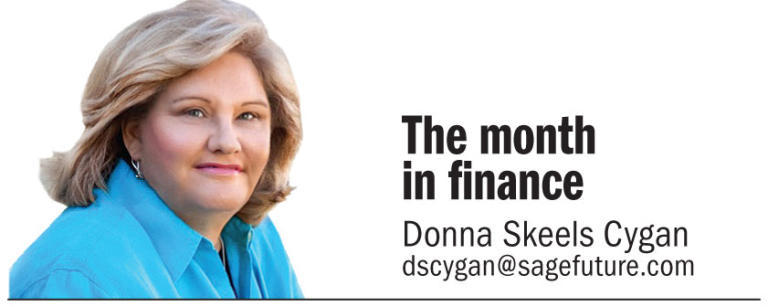This month I will be posting a series of articles that were published on the Albuquerque Journal. These articles will explore the relationship between money and happiness. This week’s topic covers the stock market.
The first quarter of 2016 felt like a roller coaster for many investors. The Dow Jones Industrial Average began a downward spiral on January 4 and declined 10 percent by Feb. 11. Since then, the DJIA has rallied and recouped those early 2016 losses. The fear index was very high during January and February, but subsided during March and investors almost seemed complacent. The DJIA gained more than 1,200 points during March.
We can’t assume the stock market will provide a steady ride going forward. Volatility will continue. Remember 1929? Probably not. How about Oct. 19, 1987? Perhaps. Sept. 11, 2001? Or Sept. 15, 2008? All of these dates represent significant declines in the stock market, and yet, the market has always recovered.
Impact of declining oil prices
This one caught economists by surprise. A barrel of crude oil cost $108 in 2014. During 2015, it ranged between $35-$62 per barrel. On Feb. 11, it dropped below $27 per barrel, and oil was assumed to be a major reason for the volatile stock market in January and February (along with declining growth in China, the Federal Reserve raising interest rates in December and many other factors).
Most economists assumed that the lower price of gasoline (paying less at the pump as we fill our cars) would have a positive impact on the U.S. economy. Instead, the impact has been very negative and far-reaching. What is behind the plummeting price of oil? It can be traced to increased production in the U.S. in shale fields, and the oil and gas technology used in recent years called “fracking.” The accurate term is hydraulic fracturing and the process results in thousands of barrels of salty water laced with heavy metals being extracted along with the oil and natural gas. The wastewater is later injected deep underground under high pressure in disposal wells. (WSJ 3/29/16) The wastewater has been lubricating the fault lines deep below the surface of the earth, causing earthquakes. Oklahoma reported one substantial earthquake in 2007 and more than 900 in 2015. Although Oklahoma state officials have been hesitant to blame the earthquakes on deep wastewater injection, the U.S. Geological Survey released a report in late March that labeled these “man-made” earthquakes and stated that 7.9 million people are now at risk from “induced” earthquakes in certain regions of Oklahoma, Kansas, Colorado, New Mexico, Texas, and Arkansas (money.cnn.com/2016/03/29).
This is a serious issue for Oklahoma, where 20 percent of the jobs are related to the oil and gas industry. (Time 3/21/16). Banks across the U.S. have loans on their books from oil companies that are at risk of bankruptcy. They are setting aside reserves in anticipation of some of the loans defaulting, and are assessing the risk.
There is a global glut in oil that has caused prices to plummet. Fracking now makes up one-half of U.S. oil and gas production. In 2000, there were 23,000 fracking wells. In 2015, there were 300,000 according to the Energy Information Administration (money.cnn.com/2016/03/29). Due to the current low prices, many of the wells are shut down. They will resume drilling if prices increase. Cities in North Dakota went from boom to bust. Real estate prices in Houston are reportedly depressed due to oil companies cutting back. In addition to the economic fallout, residents in some areas also need to worry about earthquakes.
Aubrey McClendon, Chesapeake Energy’s cofounder and former CEO – and a major player in the oil and gas boom – died March 2 in a high-speed, single-car crash in Oklahoma City, a day after he was indicted for rigging oil and gas leases. Chad Warmington, president of the Oklahoma Oil and Gas Association, described the state of the industry: “It’s pretty bleak. The mood is extremely negative.” (Time 3/21/16)
Pensions
Following the 2008 financial crisis, many pensions in the U.S. were underfunded. The situation in Europe is much more dire. There are currently 42 Europeans over the age of 65 and not working for every 100 workers. This is expected to rise to 65 for every 100 workers by 2060. By comparison, the U.S. currently has 24 nonworking people 65 or over for every 100 workers. Starting in 2017, European Union rules will require European governments to calculate the total amount they must pay current and future pensioners. Hans Hoogervorst, chairman of the International Accounting Standards Board stated, “It will make clear that the current situation is unsustainable.” (WSJ 3/7/2016)



